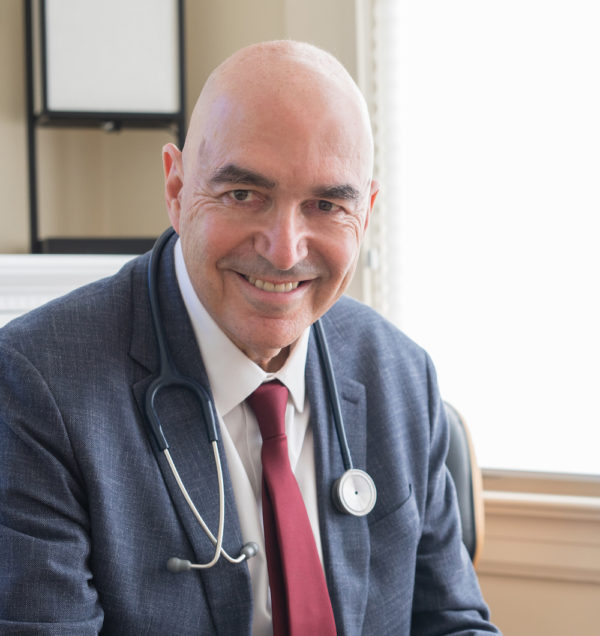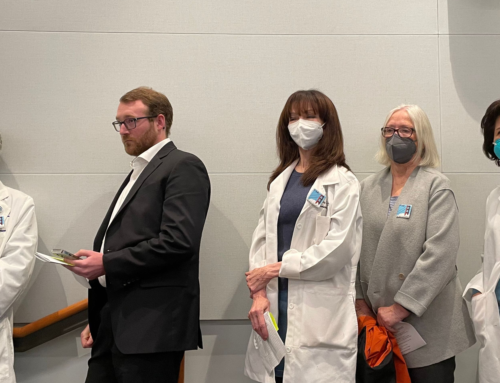AUGUST 9, 2022
By Howard Kornfeld, MD, SF Bay PSR member and assistant clinical professor at University of California, San Francisco
This account tracks my experience of awakening as an anti-nuclear activist in 1979 to a reawakening this year and my attendance at the International Campaign to Abolish Nuclear Weapons (ICAN) Nuclear Ban Forum, in Vienna, June 18-19, 2022, an outstanding experience of the highest order.
In California, while driving to the hospital for a shift in the emergency room on March 28, 1979, the date of the Three Mile Island Nuclear Reactor accident, and listening to KPFA radio, I heard Ralph Nader recommend an evacuation of the entire population from the 50-mile radius of the reactor. The Governor of Pennsylvania, however, ordered only children and pregnant women to evacuate and only within a 5-mile radius.
I respected Mr. Nader, as I had seen in emergency rooms the results of his efforts advocating for seat belt use, the contrast between the devastating head and neck injuries in the unrestrained victims of motor vehicle accidents to the comparatively much less significant injuries in those restrained by seat belts.
Soon thereafter, I watched the movie The China Syndrome (1979, starring Jane Fonda, Michael Douglas, and Jack Lemmon) depicting a nuclear plant meltdown and coverup. The dots were then connected, the die was cast, and I knew I had to get involved.
I called my friend, Dr. Marty Rossman, and he suggested I join Dr. Peter Joseph, who was about to chair the second meeting of the San Francisco chapter of Physicians for Social Responsibility (PSR).
Through PSR, I learned about a protest rally at the Lawrence Livermore Nuclear Weapons Lab. I not only heard, but absorbed the message about the reality of nuclear war from Daniel Ellsberg and Dr. Helen Caldicott. Soon after, the national office of PSR received a $60,000 grant from one of the Rockefeller foundations to hold a series of conferences around the U.S. to be titled, The Medical Consequences of Nuclear Weapons and Nuclear War.
Dr. Peter Joseph became president and I became program director of San Francisco PSR, and we created a successful conference, the second after Boston, on November 17-18, 1980. The film, The Last Epidemic, a film reportedly viewed a million times, was made from footage of the conference.
As PSR was reinvigorated and as IPPNW was born with the collaboration of Boston cardiologist, Dr. Bernard Lown, and Russian cardiologist, Dr. Evgeny Chazov, a number of young activists fanned out giving lectures and seminars wherever we were invited. I made a list of about 70 talks that I gave over that several year period.
Dr. Lown invited me to become a delegate at the First Congress of IPPNW held March 20-25, 1981 in Airlie, Virginia. At the invitation of Dr. Philip R. Lee, former chancellor of University of California, San Francisco (UCSF), I became a policy scholar at the UCSF Institute for Health Policy Studies and published a historical study on the development of “civil defense” against nuclear war as conceived in 1955 as compared to 1983.
During the following four decades, I moved on from this focus, engaging in other public policy issues, and also became a specialist in both pain and addiction medicine. During this period, the ideas of Gregory Bateson came to my attention. Bateson was a social scientist and systems biologist appointed by Governor Edmund Brown to the University of California Board of Regents in 1976.
I was curious about Bateson’s interest in studying addiction, not only as a problem with drugs and alcohol for the individual but as a wider biological process that can exert itself in the widest social or ecological spheres with consequences such as escalation of climate change and armaments races.
In a famous essay, Bateson frames a theory of alcoholism and the success of Alcoholics Anonymous in correcting a lethal belief system at the moment of “hitting bottom.” He links this deep pathological premise with additions in the wider sphere such as our addiction to the convenience and profits of fossil fuels, and to continued escalations of power via military competitiveness between countries. Concluding the essay, he writes, “It is doubtful whether a species having both an advanced technology and this strange way of looking at its world can endure.”
My family and I attended the peace camp, protest, and rally at the Lawrence Livermore Laboratory on the 70th anniversary of Hiroshima Day on August 6, 2015, hearing once again the words of Daniel Ellsberg.
When I met with Governor Brown and Nora Bateson (Gregory Bateson’s daughter and president of the International Bateson Institute) in 2017, he had a prepublication copy of Daniel Ellsberg’s The Doomsday Machine on his desk and he handed us his paper from 1984, “Nuclear Addiction: A Response.” This was a reflection on then Secretary of Defense Caspar Weinberger’s testimony to the U.S. Senate advocating for the Reagan administration’s $220 billion dollar plan to add 7,000 new nuclear weapons “to an arsenal from which 170,000 times the firepower used on Hiroshima can already be launched.”
Vladimir Putin’s invasion of Ukraine and threats to use nuclear weapons, helped further my reawakening this year and led to my meeting Dr. Robert Gould, president of the San Francisco Bay chapter of PSR, and Chuck Johnson, program director of IPPNW. Also, I attended the ICAN Nuclear Ban Forum in Vienna in June of this year, and there I had the honor of meeting Dr. Ira Helfand, a leader in the movement and currently a leading medical voice in ICAN’s campaign for the Treaty on the Prohibition of Nuclear Weapons.
The Ban Forum was well organized, beautifully presented, and represented one of the highest forms of human endeavor that I have ever had the opportunity to experience. I was profoundly moved by the achievements of ICAN and was gratified that the campaign was awarded the Nobel Peace Prize in 2017, as IPPNW had been in 1985. The leadership of women and influence of feminist ideas, the recognition of indigenous and other peoples that have suffered from the multi-generational diseases related to nuclear weapons testing, and the clarity of ICAN’s mission — all stood out as particularly meaningful.
It will be a privilege in the days ahead to support PSR, IPPNW, and the mission of ICAN. It is both painful and invigorating to have reawakened. The clarity is undeniable of the challenges ahead and the awe at what has been achieved is a profound balm and inspiration. Thank you to the efforts all of these years of PSR and of IPPNW and the leaders such as Dr. Gould and Dr. Helfand who have led to the creation of ICAN and actualization of the Treaty on the Prohibition of Nuclear Weapons.





